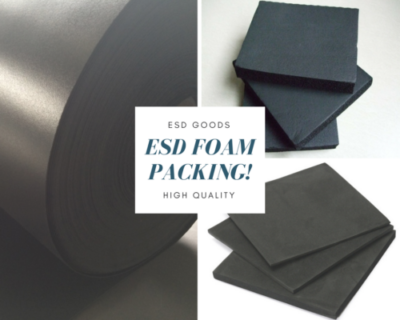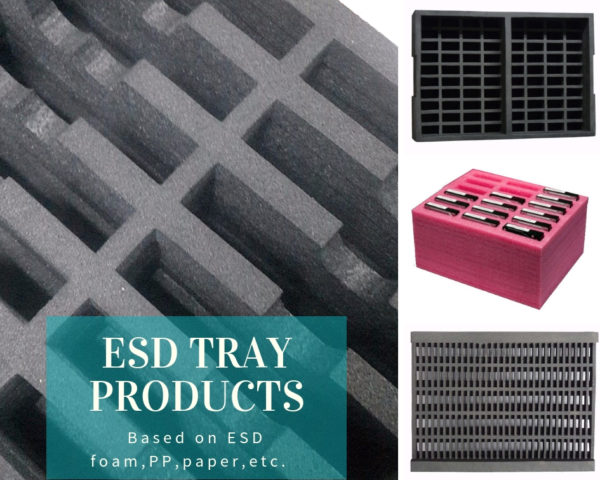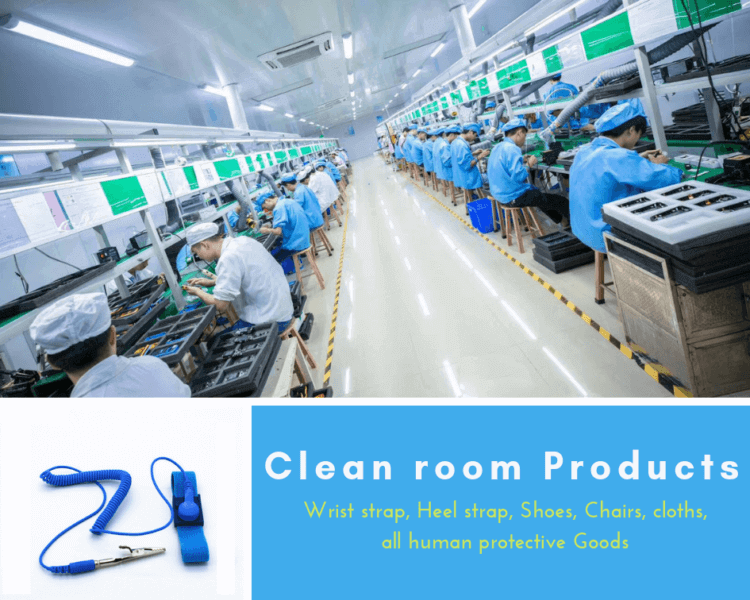Black Anti Static PE Foam and EVA Foam Contrast
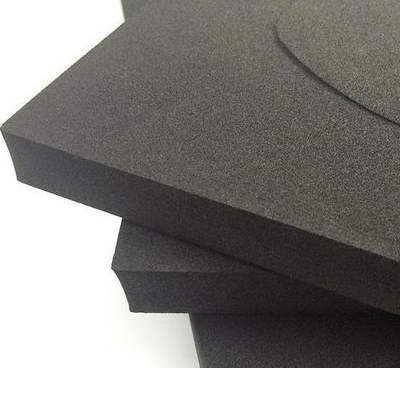
When it comes to choosing the right material for packaging or cushioning electronic products, anti-static foam is a popular choice. However, not all anti-static foams are the same. In this article, we will explore the differences between black anti-static PE foam and anti-static EVA foam.
Black anti-static PE foam, a variant of polyethylene foam, is lightweight and durable. It provides excellent cushioning and protection for sensitive electronic components and devices. The black color of the foam also helps to reduce static discharge and dissipate static charges, ensuring that the products remain safe and undamaged.
On the other hand, anti-static EVA foam is known for its superior shock absorption properties. Made from ethylene-vinyl acetate, EVA foam offers good resilience and impact resistance, making it ideal for protecting delicate and fragile electronic items during transportation or storage.
While both foams provide anti-static properties and protection against static damage, they have different characteristics and are suited for different applications. By understanding these differences, you can make an informed decision on which foam is best suited for your specific packaging or cushioning needs.
So, read on to learn more about the distinctions between black anti-static PE foam and anti-static EVA foam, and discover which one is the right choice for your electronic product.
Article Content:
- Understanding the need for anti-static foam in different industries
- Overview of black anti-static PE foam
- Advantages and disadvantages of black anti-static PE foam
- Applications and uses of black anti-static PE foam
- Overview of anti-static EVA foam
- Advantages and disadvantages of anti-static EVA foam
- Applications and uses of anti-static EVA foam
- Comparing black anti-static PE foam and anti-static EVA foam
- Conclusion: Choosing the right anti-static foam for your needs
Understanding the need for anti-static foam in different industries
In today's technologically-driven world, electronic products are an integral part of our everyday lives. From smartphones to laptops, these devices have become essential tools that we rely on for communication, work, and entertainment. However, these electronic components are highly sensitive to static electricity, which can cause irreparable damage. This is where anti-static foam comes into the picture.
Anti-static foam is a specialized material that is designed to prevent the buildup and discharge of static electricity. It provides a protective barrier that shields electronic products from potential damage during transportation, storage, and handling. This foam is commonly used in various industries, including electronics manufacturing, aerospace, automotive, and medical, where the protection of sensitive electronic components is of utmost importance.
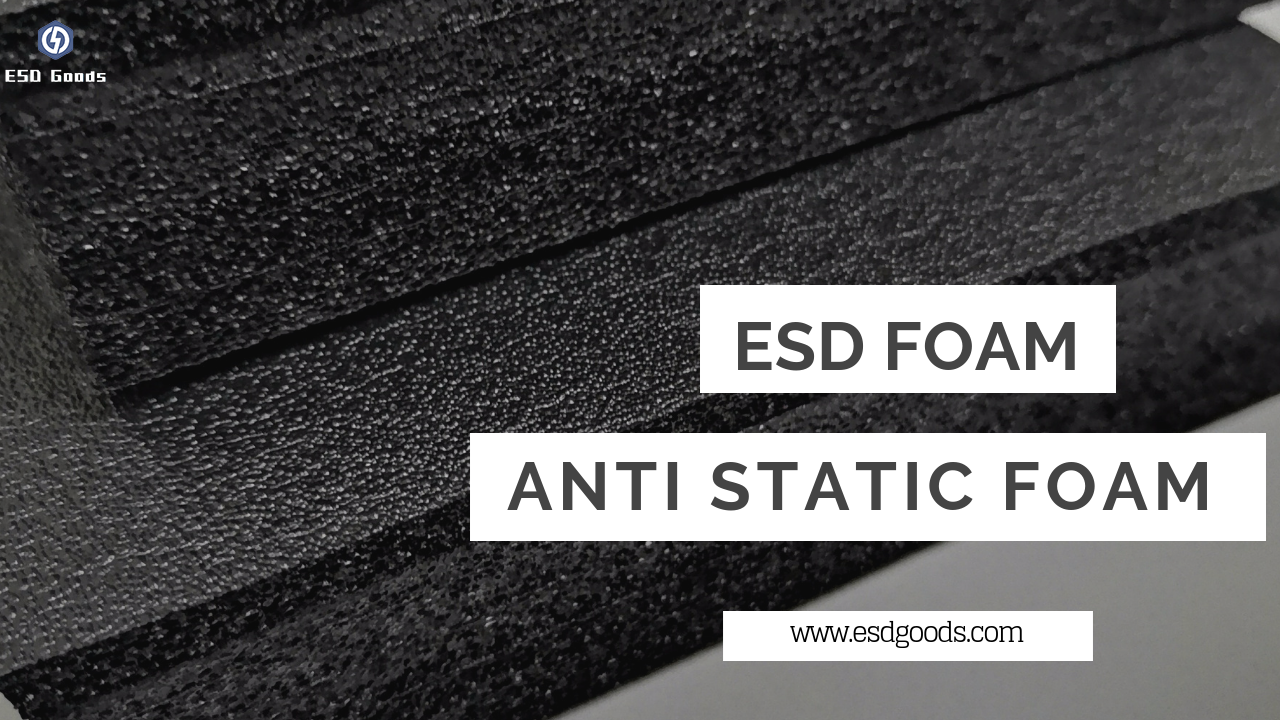
Anti static black foam
Overview of black anti-static PE foam
Black Anti static PE foam, a variant of polyethylene foam, is skinned and rolled for continuous high volume production. It is a popular choice for packaging and cushioning electronic products. It is a lightweight and durable material that offers excellent shock absorption and cushioning properties. The foam is infused with anti-static agents, which help to reduce the buildup of static electricity and dissipate any charges that may occur.
One of the notable features of black anti-static PE foam is its ability to provide reliable protection against physical impact and vibrations. This makes it suitable for applications where delicate electronic components need to be safeguarded from potential damage during transit. Additionally, the black color of the foam plays a significant role in minimizing static discharge, ensuring that the products remain safe and undamaged.
Advantages and Disadvantages of Black Anti-Static PE Foam
Advantages:
- Excellent ESD Protection:Black anti-static PE foam provides robust protection against electrostatic discharge, making it a preferred choice in environments where sensitive electronic components are prevalent.
- Durable and Lightweight:The inherent durability of PE foam ensures a longer lifespan, while its lightweight nature simplifies handling during manufacturing and assembly processes.
- Chemical Resistance:This foam variant exhibits resistance to a variety of chemicals, enhancing its suitability for deployment in industrial environments where exposure to different substances is common.
Disadvantages:
- Limited Temperature Range: Black anti-static PE foam may have limitations in extreme temperature conditions, requiring careful consideration in applications where temperature variations are significant.
- Less Softness: In comparison to some other foam materials, black anti-static PE foam may be less soft, which may be a consideration in applications requiring a softer touch.
Applications and Uses of Black Anti-Static PE Foam
The versatility of black anti-static PE foam extends across various applications, solidifying its role as a go-to material for ESD protection:
- Electronics Packaging: In the realm of electronics manufacturing, black anti-static PE foam is employed to cushion and shield sensitive electronic components during transport and storage, ensuring their integrity.
- Industrial Workstations: The foam is utilized in the creation of ESD-safe workstations, where it acts as a protective barrier against static charges, minimizing the risk of damage during assembly processes.
- Automotive Manufacturing: Given its durability and ESD protection capabilities, black anti-static PE foam finds applications in the automotive industry, safeguarding electronic systems within vehicles during assembly.
Overview of anti-static EVA foam
Anti static EVA foam made from ethylene-vinyl acetate, is basically incomplete and bubble hole delicate because it is molded foaming products. sizes are fixed. such 1200*2400mm and 1400mm*2500mm. it is another popular choice for protecting delicate and fragile electronic items. EVA foam is known for its superior shock absorption properties, providing excellent cushioning and impact resistance. It is a versatile material that is widely used in various industries, including electronics, sports equipment, and automotive.
The anti-static properties of EVA foam are achieved through the addition of carbon or other conductive materials during the manufacturing process. This ensures that static charges are prevented from building up and dissipates any charges that may occur. The foam's resilience and impact resistance make it an ideal choice for applications requiring reliable protection against physical impact.
Advantages and Disadvantages of Anti-Static EVA Foam
Advantages:
- Superior Shock Absorption:Anti-static EVA foam excels in shock absorption, providing excellent cushioning for delicate components. This makes it an ideal choice for applications where protection against impact is crucial.
- Wide Temperature Range:Maintaining performance across diverse temperature conditions, anti-static EVA foam proves to be versatile, adapting to a broad spectrum of environments.
- Lightweight and Flexible:Known for its lightweight and flexible nature, anti-static EVA foam is easy to handle and conforms well to various shapes, enhancing its adaptability.
Disadvantages:
- Moderate Chemical Resistance:In comparison to some other foam materials, anti-static EVA foam may exhibit moderate resistance to certain chemicals, necessitating caution in environments with chemical exposure.
- Cost Consideration:While offering superior properties, anti-static EVA foam may be relatively more expensive than some alternatives, requiring a balance between performance and cost.
Applications and Uses of Anti-Static EVA Foam
The versatility of anti-static EVA foam lends itself to diverse applications, showcasing its relevance across different industries:
- Medical Equipment Packaging:Anti-static EVA foam is employed in the medical industry for packaging sensitive equipment, ensuring that delicate medical devices remain protected from electrostatic discharge.
- Consumer Electronics:Recognizing the need for effective ESD control, anti-static EVA foam is utilized in the packaging of various consumer electronics, providing a reliable shield against static damage.
- Cleanroom Environments:The foam's anti-static properties make it suitable for deployment in controlled environments such as cleanrooms, where maintaining a static-free atmosphere is critical.
Comparing black anti-static PE foam and anti-static EVA foam
Black anti static PE foam and EVA foam, both produced by adding carbon black mixing and foaming. The performance is basically similar.
Foam conductive or anti static proterties:
Conductive/ Anti static performance, Conductive :10^3-10^6 , and Anti static :10^6-10^9, basically no difference.
Foam Material physical property:
EVA foam is more wear-resistant, but forming needs glue adhesion, it can not melt self-adhesive.
PE foam processing can be hot adhesive without glue more environmentally friendly.
Both are weather resistance, temperature resistance, acid and alkali properties of the basic properties , no difference;
Foam Lamination Characters:
Anti static EVA foam material are more suitable for lathe machine processing molding, production of large electronic products on the assembly line, such as the full use of its wear-resistant characteristics.
Compared with EVA foam, PE foam more suitable for the production of various molding pallets, knife cards, more importantly, Eva foam has a good tolerance can add a lot of recycled materials.
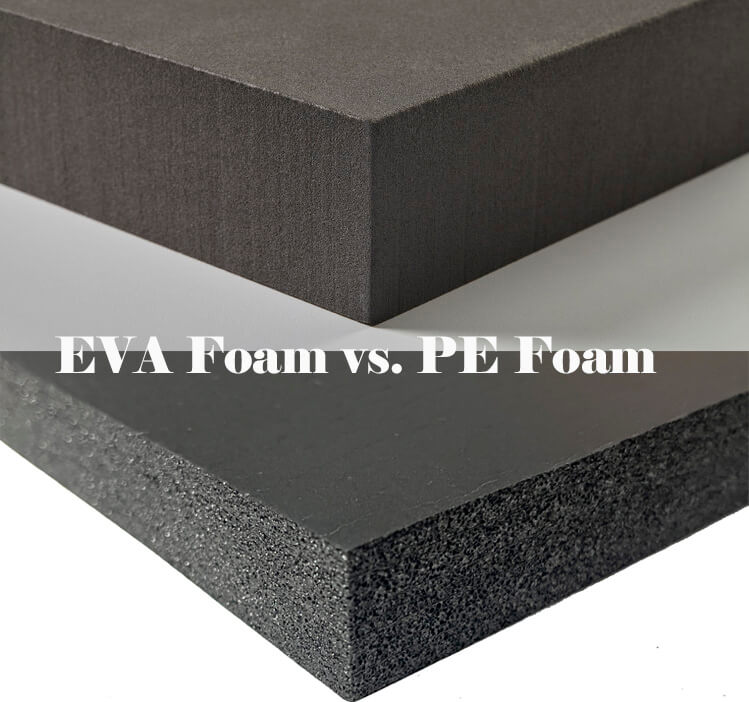
Conclusion: Choosing the right anti-static foam for your needs
In conclusion, black anti-static PE foam and anti-static EVA foam are both excellent choices for protecting electronic products from static discharge and physical impact. Each foam has its advantages and disadvantages, making them suitable for different applications.
When selecting the right anti-static foam for your requirements, a comprehensive understanding of the unique properties and applications of each foam type is essential. Consider the specific ESD control needs of your industry, the environmental conditions in which the foam will operate, and the level of protection required for your sensitive components.
Ultimately, the right choice ensures optimal performance, longevity, and reliability in safeguarding against electrostatic discharge. Whether you opt for the durability and chemical resistance of black anti-static PE foam or the superior shock absorption of anti-static EVA foam, your decision plays a crucial role in upholding the integrity of your products and components in the ever-demanding landscape of modern industries.

